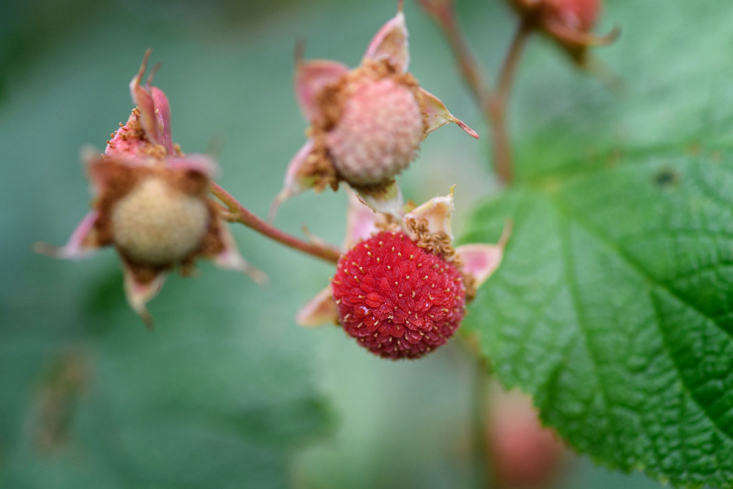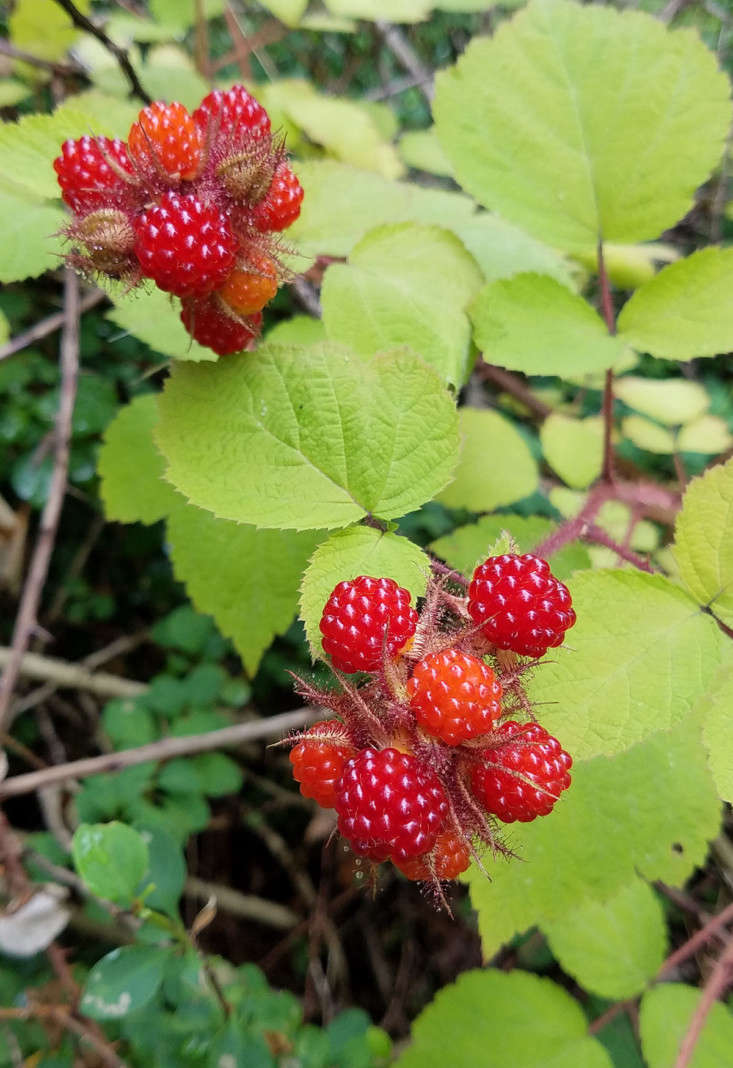Today we’ll discuss everything you need to know about four common raspberries—canes, flowers, fruit, the works. But first, a little background. The Rubus (edible bramble) genus contains many hundreds of species. And despite being one of the easiest plants to recognize in broad terms, even my plant-geek mind is bamboozled by some common and attractive raspberries that have close look-alikes.
Read on to learn the differences between three native and one invasive species of Rubus, each bearing delicious fruit but easily confused with one another. With the invasive exception, raspberries are excellent additions to edible and wild gardens.
Photography by Marie Viljoen.
Purple-flowering raspberry: Rubus odoratus

Flowers: Large and lilac-purple, in clusters
Canes: Smooth with exfoliating bark on older canes
Fruit: Flattened, red, and matte
Native to: Eastern North America
Unlike wineberry, purple-flowering raspberry canes are woody and smooth, rather than densely furry.
Purple-flowering raspberries’ fruits are borne in loose clusters and resemble domesticated raspberries with broader, less pointed caps. They ripen in late summer.
Confusingly, purple-flowering raspberry is often called thimbleberry, and the fruit looks very similar to western thimbleberry, which is native to the Pacific Northwest (and has white flowers).
Thimbleberry: Rubus parviflorus

Flowers: Large and white
Canes: Smooth
Fruit: Red and matte, like a broad raspberry
Native to: Western North America
Western thimbleberry fruit closely resembles that of the Eastern native purple-flowering raspberry, but its large flowers are helpfully white (and also fragrant). It blooms in late spring.

Western thimbleberry fruit begins to ripen in midsummer, over an extended season. The shrub tolerates dry soil and dislikes having moist feet.
Wineberry: Rubus phoenicolasius

Flowers: Very inconspicuous and white
Canes: Densely hairy
Fruit: Glossy orange-red
Native to: Eastern Asia; invasive in the US

Wineberry flowers are so small they are close to invisible. Their leaves have silvery undersides. The glossy orange fruit closely resembles salmonberries, but the plant occurs in the Northeast, unlike their Pacific Northwestern cousin.
Salmonberry: Rubus spectabilis

Flowers: Large and dark pink, pointed petals
Canes: Smooth
Fruit: Hairy, shiny when ripe, yellow to red
Native to: The Pacific Northwest
Salmonberries’ glossy fruits ripen from early to midsummer, making them one of the earliest wild raspberries of the season.
Growing naturally in moist ground in full sun or dappled shade their water requirements are high. This is not a plant for a dry climate.

Salmonberries’ beautiful flowers are very hummingbird-friendly. The shrubs can grow large, up to 12 feet in spread. They form excellent natural barriers or living fences.
For more growing tips, see Raspberries: A Field Guide to Planting, Care & Design in our curated guides to Edibles 101. Read more:
- Gardening 101: Raspberry
- Everything You Need to Know About Edible Gardens
- Edible Gardens: Black Raspberries, America’s Lost Fruit












Have a Question or Comment About This Post?
Join the conversation (1)